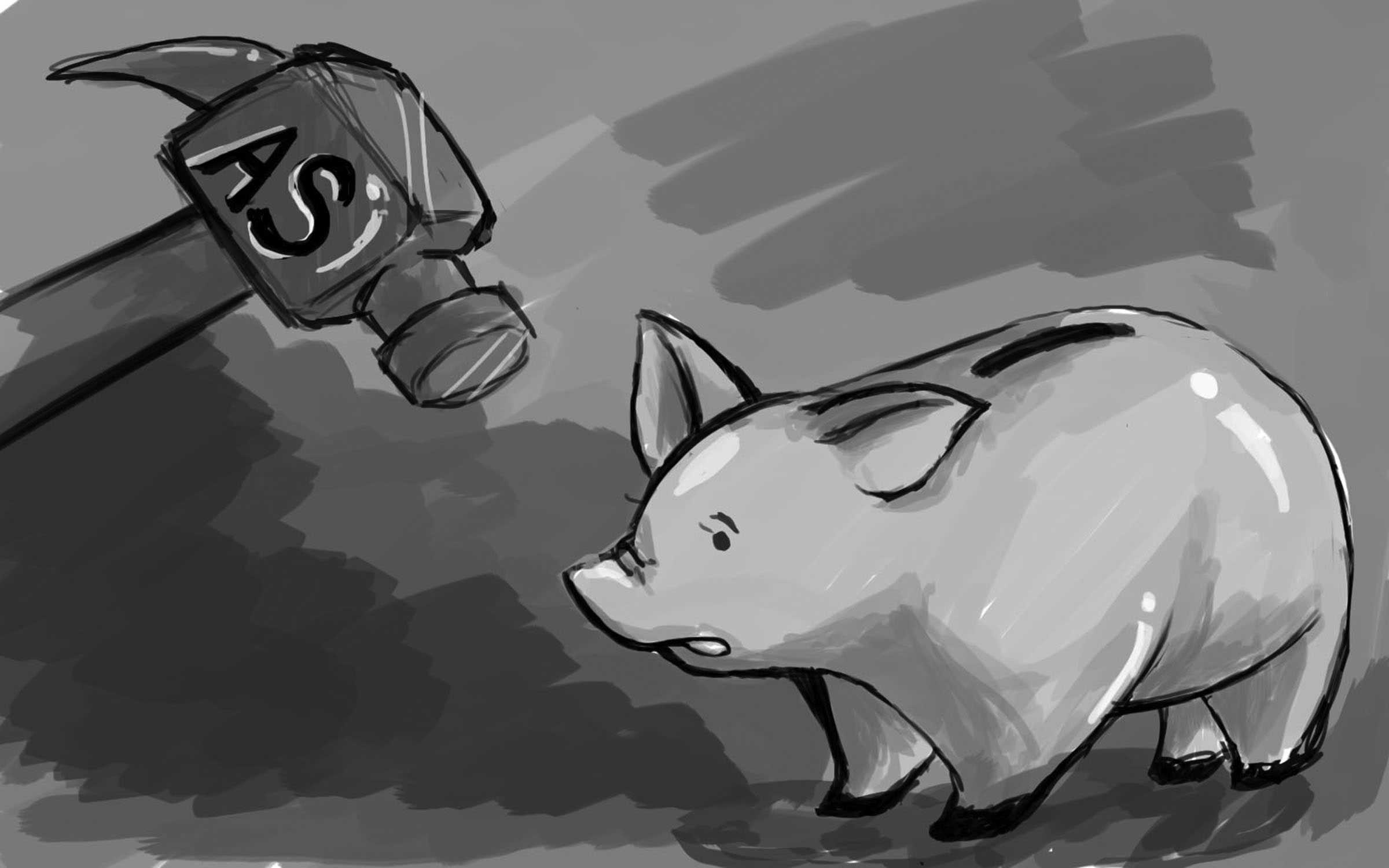In one of the final acts of its term, A.S. Council voted last month to bypass its own bylaws and dig into the already- strained Mandated Reserves to help fund student organiza- tions. Because a total sum of $60,000 (or roughly 17 percent of the total reserve fund) had to be called up to replenish the account that pays for activities and events, we can no longer argue, as we did in October 2013, that cuts in other A.S. departments would enable sufficient spending on organizations.
Trimming the edges will no longer work in trying to ensure that student groups can be fulfilled while A.S. Council remains in the black. With only one day remaining of the 2013-14 Council term though, we don’t have any expectation that student organization-funding reform will make any headway before the weekend. However, the next A.S. Council needs to critically reassess the protocol for allocating funds, the amounts to which each organization is entitled and possibly how many organizations are allowed to exist.
We’re certainly not interested in seeing fewer or less prominent student organizations on campus. Religious, social, cultural, Greek and political groups are the lifeblood of social activity on campus and we see only negative ramifications for a reduced presence here. The new Council will need to determine, though, the procedure for organizations applying for their funding. We think that the most responsible solution is a strict cap on the amount of money that an organization can request per year.
The most glaringly obvious solution to the funding issue is to ask the beneficiaries of student organizations (i.e. students themselves) to pay a little more per quarter from student fees. A very modest fee increase levied on students could generate new funds for activities, as well as add to the mandated funds for financial aid. We think that this might be the smartest way to ensure the future of organizations without taking a huge toll on students.
The Center for Student Involvement estimates that nearly 600 student organizations currently exist on campus. Assuming that each organization averages 10 members and that each member belongs only to one organization, a whopping 25 percent of campus is involved in student organizations. The number of student beneficiaries of social group-activity planning and spending (think “free pizza”) is likely even higher. With such a high number of active students, modest fee increases would greatly improve the climate for funding student groups.
Were each of the current 23,805 undergraduates to give an extra $1 to student activity fees per quarter, the revenue would more than cover the $60,000 extra needed this year to cover an unanticipated increase in funding requests. Additionally, a very modest fee increase should not enrage students as other fee increases have.
Any given organization cannot currently treat A.S. Council as a private bank account — the funds, as we’ve seen, are already limited. But as student fee revenue is finite, Council should be more transparent about annual request limitations. There are of course some organizations that come nowhere near the maximum that A.S. Council can afford. On the other hand, though, there are organizations that are very familiar with using the fund- ing request forms and which take a nice portion of A.S. money. Those groups should work to make necessary adjustments to their internal- funding plans to include more fundraising efforts and other avenues for revenue.
To additionally help spare the student organizations, Council should also look toward making some internal cuts to other departments, including its Pancake Breakfast or Bear Garden event. Council could also do a better job of consolidating elections into a single general election, thus streamlining the entire process and cutting down on the associated expenditures. Finally, the climate for student entrepreneurship should be relaxed to allow more direct fundraising and moneymaking for student organiza![]() tions with oversight to ensure that nonprofit status is maintained.
tions with oversight to ensure that nonprofit status is maintained.
We’re quarters, if not years, away from a fee increase of this sort, as Council will first need to push its upcoming transportation referendum to fund our bus passes. But as the keys get handed over to the new Council, we hope that smart choices will be made to ensure that student organization funding won’t further deplete A.S. Council’s emergency piggy bank.














derpy • May 1, 2014 at 6:32 pm
” A very modest fee increase levied on students could generate new funds for activities”
Are you kidding? The council’s budget has more than DOUBLED since 2005. They don’t need more money; they need to stop spending $500,000 on Sun God. You know how much Sun God cost five years ago? HALF that. You know how much it needs to cost to still be awesome? HALF that again.
Spend no more than $300k on Sun God. Eliminate A.S. council salaries. Put the rest of the money toward student org events that are open to all students.
Do NOT raise fees.